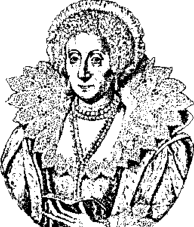A literary circle
Mary (Sidney) Herbert, Countess of Pembroke (1561-1621) was educated along with her brother, Sir Philip Sidney, in Latin, Greek, and Hebrew.
She raised three children while pursuing her own writing and supporting many of the artists of her time. In addition to inspiring her brother's prose romance (the full title of which reads The Countess of Pembroke's Arcadia), she was also patron to such poets as Meres, Spenser, Donne, Breton, Nashe, Harvey, and Daniel.
Her writings
The Countess of Pembroke both translated and wrote religious poetry. She and Sir Philip collaborated on a translation of the Psalms, which she finished on her own. Amongst other works, she wrote the pastoral poem "A Dialogue between Two Shepheards" in anticipation of a visit by Queen Elizabeth. The poem is a dialogue between Thenot and Piers; the form (interlocking tercets) is Italian in origin.
"A Dialogue between Two Shepherds"
Thenot: I Sing divine ASTREA's praise;
O Muses! help my wits to raise,
And heave my Verses higher.
Piers: Thou needst the truth but plainly tell,
Which much I doubt thou canst not well,
Thou art so oft a liar.
Thenot: If in my Song no more I show
Than Heav'n, and Earth, and Sea do know,
Then truly I have spoken.
Piers: Sufficeth not no more to name,
But being no less, the like, the same;--
Else laws of truth be broken. . . .
Thenot: ASTREA rightly term I may
A manly Palm, a Maiden Bay,
Her verdure never dying.
Piers: Palm oft is crooked, Bay is low,
She still upright, still high doth grow,
Good Thenot, leave thy lying.
